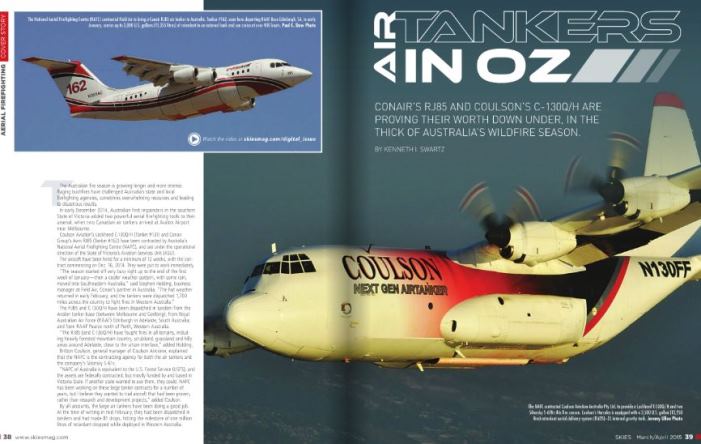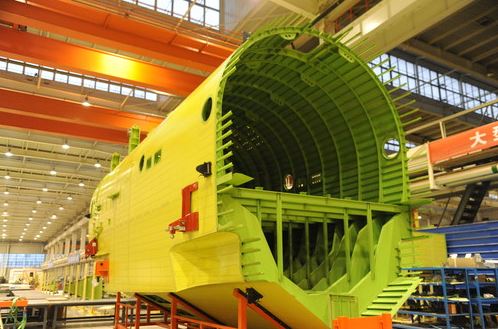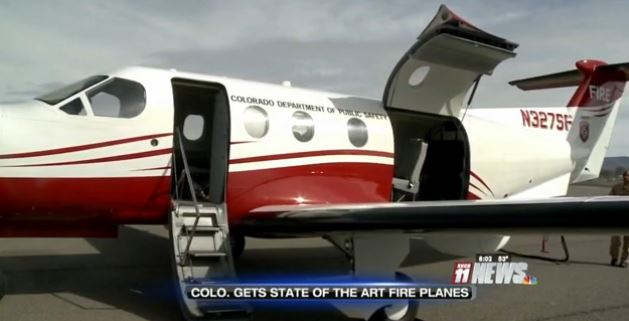One of our loyal readers pointed out to us that the same issue of Skies magazine that had an article about the two large air tankers spending the Australian summer down under, also had something written by Tony Kern, but he said that he was unable to view it. At first we were going to link to it and wanted to be sure we got Mr. Kern’s title right for when he worked for the U.S. Forest Service. It turned out that the piece he wrote was not terribly interesting, to me anyway — it is a short article about “selflessness”. But in the research for his title, we found the transcript of a March 26, 2003 hearing before the Senate Committee on Energy and Natural Resources.
Mr. Kern was a Deputy Director of the Forest Service’s Fire and Aviation program, and was sometimes referred to as the USFS Aviation Director. His bio states that he was selected for the USFS job after retiring from the Air Force in June, 2000. There is no mention of him having any experience with air tankers or fire management before he took over the air tanker and helicopter program in the USFS. A piece he wrote in 2002 (along with a rebuttal by John Watt) leads one to think that at one time he believed that a lead plane preceding an air tanker on a drop was not absolutely necessary, or could be handled by helicopters, such as the AH-1 Cobra, which later came to be called Firewatch when the USFS got a couple of them up and running. Currently Mr. Kern is the CEO of Convergent Performance, a company based in Colorado Springs, Colorado that campaigned for the state’s Center of Excellence for Advanced Technology Aerial Firefighting to be located in Colorado Springs.
But, back to the Congressional hearing, in which Mr. Kern was one of six witnesses in the room testifying before the Senate Committee. The others were:
- William R. Broadwell, Executive Director, Aerial Firefighters Industry Association.
- Larry Hamilton, National Director, Department of the Interior Office of Fire and Aviation, NIFC, BLM.
- Jim Hull, State Forester and Director, Texas State Forest Service.
- Jim Hall, President, Hall and Associates, former chair of the National Transportation Safety Board
- Duane A. Powers, Director of Operations, Hawkins & Powers Aviation, Inc., Greybull, WY
Mr. Hull and Mr. Hall were co-chairs of the Blue Ribbon Fact Finding Panel on Aviation that was formed after the wings fell off two air tankers in 2002, completely shutting down, temporarily, the large air tanker program in the United States, grounding the remaining 42 air tankers. The Blue Ribbon Panel completed their report three months before the hearing. When it convened, inspections, evaluations, and recommendations were being completed and written, to try to find ways to safely reconstitute a large air tanker program.
One thing that impressed me about the hearing was the quality of the questions by the Senators. Most of them were intelligent, insightful, and showed a surprising understanding of the fire aviation program. Of course it is possible, or probable, that the staff of the Senators and the Committee prepared the questions which were then simply read. But some of their comments seemed to be extemporaneous, and perhaps not composed in advance. And Chair of the Committee, Senator Larry Craig, in spite of his misadventure four years later in the restroom at the Minneapolis-St. Paul airport, led a productive hearing and also asked excellent questions.
Many of the topics discussed during the hearing are still contentious today, having not been acted upon or resolved. Some of the answers to the Senators’ questions could be heard now if a similar hearing was underway on Capitol Hill.
The transcript from the hearing is long, but if you’re a fire aviation geek you may find it fascinating — and infuriating.
Here are some excerpts and highlights:
Continue reading “Revisiting a 2003 congressional hearing about air tankers”








